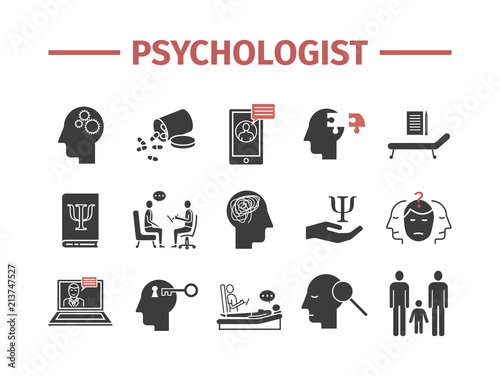What Are The Best Mental Health Accommodations At Work
What Are The Best Mental Health Accommodations At Work
Blog Article
Exactly How Do Mood Stabilizers Job?
State of mind stabilizers help to soothe locations of the mind that are influenced by bipolar affective disorder. These medicines are most reliable when they are taken routinely.
It might take a while to locate the best drug that functions best for you and your medical professional will certainly monitor your problem throughout therapy. This will include normal blood examinations and possibly a modification in your prescription.
Natural chemical regulation
Natural chemicals are a team of chemicals that manage one another in healthy people. When degrees become unbalanced, this can cause state of mind disorders like anxiety, stress and anxiety and mania. State of mind stabilizers help to prevent these episodes by assisting manage the equilibrium of these chemicals in the brain. They also may be utilized along with antidepressants to enhance their effectiveness.
Medicines that function as state of mind stabilizers consist of lithium, anticonvulsants and antipsychotics. Lithium is perhaps the most well known of these medicines and jobs by influencing the circulation of sodium with nerve and muscle mass cells. It is frequently made use of to deal with bipolar disorder, but it can also be valuable in dealing with various other state of mind problems. Anticonvulsants such as valproate, lamotrigine and carbamazepine are additionally reliable state of mind stabilizing medications.
It can take some time to find the best kind of medicine and dose for every person. It is very important to deal with your medical professional and take part in an open discussion regarding exactly how the drug is working for you. This can be especially useful if you're experiencing any type of adverse effects.
Ion channel modulation
Ion channels are a significant target of mood stabilizers and many various other drugs. It is currently well established that they are vibrant entities that can be regulated by a range of exterior stimuli. Furthermore, the inflection of these networks can have a range of temporal impacts. At one extreme, adjustments in gating dynamics may be quick and immediate, as in the nicotinic acetylcholine receptor/channel system. At the various other end of the spectrum, covalent adjustment by healthy protein phosphorylation might result in modifications in network feature that last much longer.
The field of ion channel modulation is going into a duration of maturation. Recent studies have shown that transcranial concentrated ultrasound (United States) can stimulate neurons by triggering mechanosensitive potassium and sodium networks installed within the cell membrane layer. This was shown by expressed channels from the two-pore domain potassium household in Xenopus oocytes, and concentrated United States significantly modulated the current streaming with these channels at a holding voltage of -70 mV (ideal panel, loved one result). The outcomes are consistent with previous observations showing that antidepressants influencing Kv channels manage glia-neuron interactions to opposite depressive-like habits.
Neuroprotection
State of mind stabilizers, like lithium, valproic acid (VPA), and carbamazepine, are crucial in the therapy of bipolar illness, which is characterized by reoccurring episodes of mania and anxiety. These medicines have neuroprotective and anti-apoptotic residential or commercial properties that assist to avoid cellular damage, and they likewise improve cellular durability and plasticity in inefficient synapses and neural circuitry.
These protective actions of mood stabilizers may be mediated by their inhibition of GSK-3, inositol signaling, and HDAC activity. Additionally, long-term lithium treatment protects against glutamate excitotoxicity in cultured neurons-- a model for neurodegenerative problems.
Researches of the molecular and mobile results of state of mind stabilizers have actually shown that these medications have a large range of intracellular targets, including multiple kinases and receptors, as well as epigenetic modifications. Refresher course difference between therapy and counseling is required to figure out if mood stabilizers have neurotrophic/neuroprotective actions that are cell type or wiring details, and just how these results might enhance the rapid-acting healing action of these agents. This will help to establish new, faster acting, more reliable therapies for psychological diseases.
Intracellular signaling
Cell signaling is the process by which cells connect with their atmosphere and other cells. It involves a series of action in which ligands communicate with membrane-associated receptors and result in activation of intracellular pathways that manage vital downstream cellular features.
State of mind stabilizers act on intracellular signaling through the activation of serine-threonine healthy protein kinases, leading to the phosphorylation of substrate healthy proteins. This turns on signaling cascades, leading to modifications in genetics expression and mobile function.
Numerous mood stabilizers (consisting of lithium, valproate and lamotrigine) target intracellular signaling paths by hindering certain phosphatases or triggering specific kinases. These effects create a decrease in the activity of these paths, which causes a reduction in the synthesis of certain chemicals that can influence the mind and lead to signs and symptoms of anxiety or mania.
Some mood stabilizers likewise work by boosting the task of the inhibitory natural chemical gamma-aminobutryic acid (GABA). This improves the GABAergic transmission in the brain and minimizes neural activity, therefore creating a relaxing impact.